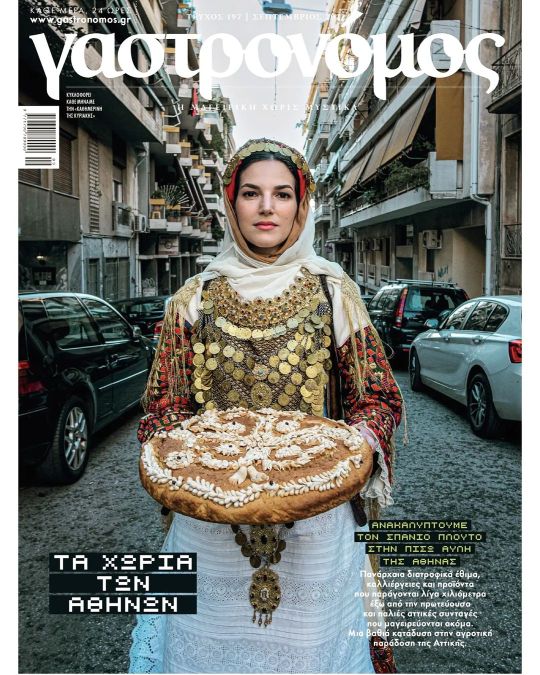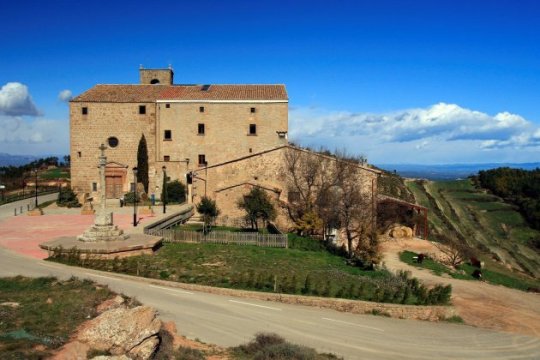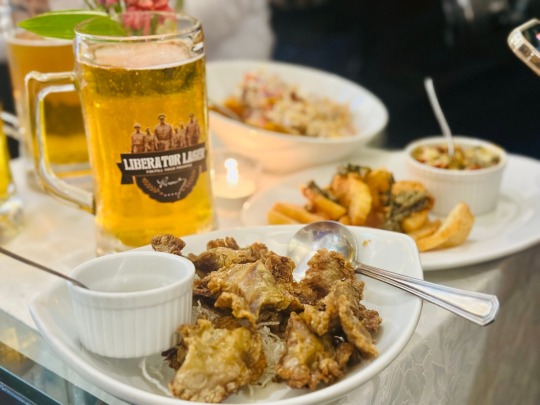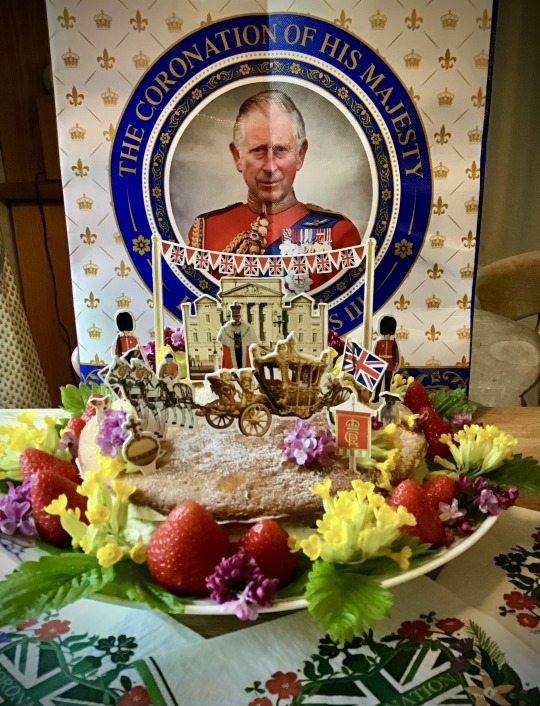#Historical cuisine
Explore tagged Tumblr posts
Text
Why We Can't Have Medieval Food
I noted in a previous post that I'd "expand on my thinking on efforts to reproduce period food and how we’re just never going to know if we have it right or not." Well, now I have 2am sleep?-never-heard-of-it insomnia, so let's go.
At the fundamental level, this is the idea that you can't step in the same river twice. You can put your foot down at the same point in space, and it'll go into water, but that's different water, and the bed of the river has inevitably changed, even a little, from the last time you did so.
Our ingredients have changed. This is not just because we can't get the fat from fat-tailed sheep in Ireland, or silphium at all anywhere, although both of those are true. But the aubergine you buy today is markedly different to the aubergine that was available even 40 years ago. You no longer need to salt aubergine slices and draw out the bitter fluids, which was necessary for pretty much all of the thing's existence before (except in those cultures that liked the bitter taste). The bitterness has been bred out of them. And the old bitter aubergine is gone. Possibly there are a few plants of it preserved in some archive garden, or a seed bank, or something, but I can't get to those.
We don't really have a good idea of the plant called worts in medieval English recipes. I mean, we know (or we're fairly sure) it was brassica oleracea. But that one species has cultivars as distinct as cabbage, broccoli, cauliflower, kale, Brussels sprouts, collard greens, Savoy cabbage, kohlrabi, and gai lan (list swiped from Wikipedia). And even within "cabbage" or "kale", you have literally dozens of varieties. If you plant the seeds from a brassica, unless you've been moderately careful with pollination, you won't get the same plant as the seeds are from. You can crossbreed brassicas just by planting them near each other and letting them flower. And of course there is no way to determine what varietal any medieval village had, a very high likelihood that it was different to the village next door, and an exceedingly high chance that that varietal no longer exists. Further, it only ever existed for a few tens of years - before it went on cross-breeding into something different. So our access to medieval worts (or indeed, cabbage, kale, etc) is just non-existant.
Some other species within the brassica genus are as varied. Brassica rapa includes oilseed rape, field mustard, turnip, Chinese cabbage, and pak choi.
We have an off-chance, as it happens, of getting almost the same kind of apple as some medieval varieties, because apples can only be reproduced for orchard use by grafting, which is essentially cloning. Identification through paintings, DNA analysis, and archaeobotany sometimes let us pin down exactly which apple was there. But the conditions under which we grow those apples are probably not the same as the medieval orchard. Were they thinned? When were they harvested? How were they stored? And apples are pretty much the best case.
Medieval wheat was practically a different plant. It was far pickier about where it would grow, and frequently produced 2-4 grains per stalk. A really good year had 6-8. In modern conditions, any wheat variety with less than 30 grains per stalk would be considered a flop.
Meats are worse. Selective breeding in the last century has absolutely and completely changed every single species of livestock, and if you follow that back another five centuries, some of them would be almost unrecognisable. Even our heritage breeds are mostly only about 200 years old.
Cheese, well. Cheese is dependent on very specific bacteria, and there are plenty of conditions where the resulting cheese is different depending on whether it was stored at the back or front of the cave. Yogurts, quarks, skyrs, etc, are also live cultures, and almost certainly vary massively. (I have a theory about British cheese here, too, which I'll expand on in a future post)
So, even before you go near the different cooking conditions (wood, burnables like camel and cow dung, smoke, the material and condition of cooking pots), we just can't say with any reliability that the food we're making now is anything like medieval people produced from the same recipe. We can't even say that with much reliability over a century.
Under very controlled conditions, you could make an argument for very specific dishes. If you track down a wild mountain sheep in Afghanistan, and use water from a local spring, and salt from some local salt mine, then you can make a case that you can produce something fairly close to the original ma wa milh, the water-and-salt stew that forms the most basic dish in Arabic cookery. But once you start introducing domestic livestock, vegetables, or even water from newer wells, you're now adrift.
It is possible that some dishes taste exactly the same, by coincidence. But we can't determine that. We can't compare the taste of a dish from five years ago, let alone five hundred, because we're only just getting to a state where we can "record" a taste accurately. Otherwise it's memory and chance.
We've got to be at peace with this. We can put in the best efforts we can, and produce things that are, in spirit, like the medieval dishes we're reading about. But that's as good as it gets.
#medieval cookery#medieval cooking#food history#historical cookery#historical cuisine#medieval arabic cookery#horticulture#genetics
1K notes
·
View notes
Text
Liverpool was named after what was once a local delicacy, fried liver in a thick wine sauce which would pool at the bottom of the plate.
15 notes
·
View notes
Text

2 notes
·
View notes
Text
Video: "Time Travel Food! The Best Burger Ben Franklin Ever Ate"
youtube
Love this channel. This is a good experiment on what would an eighteenth century burger would look like if someone traveled to that time.
This actually looks delicious. 😋
0 notes
Photo

A cover photo from the Greek culinary magazine “Γαστρονόμος” (=Gastronome). featuring old traditional recipes from rural Attica. The photo was taken by Michael Pappas.
#greece#tradition#culture#traditional clothing#folk clothing#traditional dress#folk dress#historical fashion#arvanite clothing#food#pie#greek culture#greek cuisine#large
605 notes
·
View notes
Text



Founded in the year 1524 and still open nowadays, this is the Pinós Inn (Hostal de Pinós in Catalan), the oldest restaurant in Catalonia that has been serving without interruption until our days.
The inn was founded to serve the pilgrims who came to the Sanctuary of Saint Mary of the Pinós, first built by the Templar Knights in the year 1312 and soon transferred to the Knights Hospitaller. According to the legend, in 1505 a man stopped to pray in this location to ask the Virgin Mary for help with the plague, and the Virgin Mary appeared to him. For this reason, the new church was built some years after and, right next to this church, the inn that could offer shelter and food to the pilgrims and travellers.
At first, the Pinós inn only served pilgrims, ill, and homeless people, but in 1677 they opened it to everyone. It continued being an inn (place where you can sleep and eat) until the 1970s, and since then it's all dedicated to being a restaurant. They still serve traditional Catalan food, with many dishes that continue being almost the same as all these centuries ago.
The Solsona Diocesan Archive still preserves the document that testifies the inn's opening in the 5th of July 1524. In it, the Lady of Pinós, Elisabet de Josa, gives permission to open the inn to the priest Narcís Garriga and the innkeeper Joan Bertrans.


Photos of the restaurant by Montse Giralt published in El Nacional. Photos of the documents by Oriol Clavera published by Descobrir. Information from Generalitat de Catalunya and Pep Antoni Roig (El Nacional).
#hostal de pinós#catalunya#història#history#travel#europe#catalonia#restaurant#food#foodie#gourmet#historical#traveling#did you know#cuisine#culinary#early modern history#early modern period#1500s#renaissance
48 notes
·
View notes
Text


NAPOLEON'S CHICKEN MARENGO (1867)
French cooking hasn't steered me wrong yet, so I decided to make my next Tasting History dish a Napoleonic favourite: Chicken Marengo. Apparently this dish, Napoleon's favourite, is decently well-known and still made today, but I'd never heard of it until watching Max's video. The version here is from 1867, found in the cookbook Le Livre de Cuisine by Jules Gouffé. There are a few interesting tales surrounding this dish, adding a bit of intrigue. The dish is named after the Battle of Marengo, in which Napoleon (First Consul at that time) and his French forces defeated the Austrian army (after nearly losing the battle) on June 14, 1800 in Piedmont, Italy. This battle cemented his control of Italy. While a tall tale states this dish was cooked for Napoleon by his cook, François Claude Guignet (nicknamed Dunant), after the battle, using local Italian olive oil instead of the usual French favourite, butter, this tale is pure fiction. Dunant didn't work for Napoleon at that time, and records state Napoleon dined at the tent of his cavalry general that evening. In actuality, the recipe gained popularity more because it was Napoleon's favourite dish, and Napoleon's popularity sky-rocketed after the victory at Marengo. Napoleon's valet confirms it was his favourite dish, but it may have gotten its name from the restaurants of Paris, which were trying to sell more chicken by piggy-backing on the popularity of Napoleon. While the dish was very popular in Paris during and after the Napoleonic period, written recipes of the dish don't seem to be published until about ten years after his death. Even then, they vary wildly in ingredients and method; some included egg, tomato, and truffle, and by the late-19th century, crayfish had become a standard ingredient! According to all accounts, however, Napoleon preferred his meals prepared simply, with just a few basic ingredients. He was said to dine, in both substance and manner, like a soldier (so, basically inhaling his food), and he only began eating more gourmet meals during his exile on St. Helena. It only follows then, that his favourite dish, Chicken Marengo, is a simple chicken dish with household ingredients. See Max’s video on how to make the dish here or see the ingredients and process at the end of this post, sourced from his website.
My experience making it:
The only specification which sets my ingredient list apart from Max's is the chicken itself: I used 3 boneless, skinless chicken breasts instead of the many legs and thighs. I felt they would cook more evenly, and with fewer pieces of chicken, I was hoping to have some sauce left for the broccoli I wanted to serve alongside.
I began by making my beef broth (just dissolving those little bouillon cubes in hot water), meanwhile chopping the things that needed chopping and portioning out a few of my ingredients ahead of time. Doing this makes for more dishes to clean, but I find it prevents me from forgetting to add ingredients. For the thyme and parsley, I decided to tie them into a bouquet with some twine, just like the bouquet garni in my last French dish from Tasting History. I heated up the oil in a frying pain on medium high heat, seasoned my chicken with the salt and pepper, then added them to the hot pan, filling the room in between each chicken breast with the shallots, garlic, bay leaf, and the bouquet of thyme and parsley. I then covered the pan and let it cook for ten minutes, flipped each breast, then covered and let it cook for another ten minutes, meanwhile preparing the broccoli for my side. I turned the chicken one last time, noticing it was starting to brown nicely, and let it cook for five more minutes. The smell was divine! After checking it was cooked through with a knife, I removed the chicken to a plate and covered it to keep warm. Then, I removed the shallots, garlic, and herbs onto a plate. At this point, I added in the flour little by little and immediately stirred it in as I went. I noticed that my pan was so hot that the flour seemed to be burning before I could mix it in fast enough, so I turned down the heat to medium. Because my pan was still a little too hot, I only fried the mixture for about 30 seconds after the flour was combined; it was thickening at an alarming rate. I added the shallots, garlic, and herbs back in and cooked for another 30 seconds or so, as my roux was already a golden brown colour and very thick. I added the beef broth and stirred constantly, ensuring to scrape up all the bits and combining as well as possible. While Max said to do this for ten minutes, I only did it for five, as my sauce was already so thick and I didn't want it to solidify too much. I didn't have a conical strainer, so I strained it through a normal mesh one. I plated the chicken and broccoli and spooned the sauce over each. It kind of looked like a gravy, or my mom's Chicken Scallopini dish. I quickly fried some mushrooms and added them on top along with a fresh sprig of parsley, then served the Chicken Marengo forth!
My experience tasting it:
My husband and I tucked into the saucy chicken first. The sauce was definitely a little gloopy due to how thick it was, but it tasted great! The chicken was cooked to perfection. I would say the sauce tasted like a mix between gravy and the usual Chicken Scallopini sauce - both things I love. It also went really nicely with the broccoli. The herbs, shallots, and garlic didn't come through quite a strongly as I thought they would in the sauce, but I think if I didn't strain the sauce, it would have retained a lot more of that flavour, and I'll probably try it like this next time. That's right, I definitely plan on making this recipe again! Next time I will also follow my intuition a bit more regarding the thickness of the sauce. I felt I was following the recipe to the detriment of the final product, which, I admit, I felt I must do for the sake of historical authenticity. I think the sauce would never have gotten too thick if I had held back a bit adding the flour. Despite this, if the dish tastes this good already, it will probably taste really amazing next time if I apply these changes! Napoleon and I certainly share one thing in common: our love for simple, comforting, delicious meals. If you end up making this dish, if you liked it, or if you changed anything from the original recipe, do let me know!
Chicken Marengo original recipe (1867)
Sourced from Le Livre de Cuisine by Jules Gouffé, 1867.
Prepare the chicken as for fricassee; Put a deciliter of oil in the sauté pan: Add the pieces of chicken so they do not overlap one another; Add: 3 pinches of salt, 2 pinches of pepper, 2 shallots whole, 1 whole clove garlic, 1 bay leaf, a sprig of thyme, 1 bunch of parsley; Fry for 25 minutes, till the chicken is done: Place the chicken on a platter and keep warm; Put 40 grams of flour in the sauté pan, mix together and heat for 4 minutes, and add 5 deciliters of broth; Simmer for 10 minutes, stirring with the wooden spoon; Pass the sauce through the so-called Chinese strainer: Dress the chicken as for Chicken Fricassee; Pour over the sauce and serve…Mushrooms may be added as a garnish.
Modern Recipe
Based on the recipe from Le Livre de Cuisine by Jules Gouffé (1867) and Max Miller’s version in his Tasting History video.
Ingredients:
Chicken, whatever cuts you like, Max used 4 drumsticks and 4 thighs
3.5 oz (100 ml) olive oil
1/2 tsp salt
1/4 tsp pepper
2 shallots, peeled but left whole
1 clove of garlic
1 bay leaf
A sprig of thyme
A bunch of parsley
1/3 cup (40 g) flour
2 cups (500 ml) beef broth
Mushrooms, optional
Method:
Heat the oil in a large pan over medium high heat. Add the chicken, making sure that the pieces don���t overlap, then sprinkle with salt and pepper. Add the shallots, garlic, bay leaf, parsley, and thyme, then set the lid on the pan and let it fry for 10 minutes.
After 10 minutes, turn the chicken over, then cover again and cook for another 10 minutes.
Turn the chicken one last time, cover, and cook for 5 more minutes.
When the chicken is cooked, remove it to a plate and cover it so it stays warm. Remove the shallots and larger pieces of herbs. Keep them nearby because we’ll be adding them back in just a second.
Stir the flour into the hot oil to make a roux. Continue to cook and stir for a couple of minutes, then add the herbs and shallots back in. Cook for another couple of minutes or until the roux is golden brown.
Add the beef broth and use a wooden spoon to scrape up any brown bits that stay stuck to the bottom of the pan. Bring it to a simmer, then stir constantly for 10 minutes.
Strain the sauce through a conical strainer (or a plain mesh strainer if that’s what you have). If the sauce splits, add a couple tablespoons of water, set it over low heat, and stir until you have a nice smooth sauce again.
If you’re using the mushrooms, sauté them in a bit of oil until they’re cooked.
Arrange the chicken in a dish, pour the sauce over it, garnish with the mushrooms, and serve it forth. For extra authenticity, forgo the utensils and eat with your hands as the Emperor did, and remember to use your uniform to clean up with, not a napkin.
#max miller#tasting history#tasting history with max miller#cooking#keepers#historical cooking#europe#meat#chicken#Chicken Marengo#sauces#herbs#19th century#france#Le Livre de Cuisine#Jules Gouffé#French recipes#napoleonic era#napoleon bonaparte#napoleonic wars#napoleon
5 notes
·
View notes
Text

i know its not the point but it annoys me so much how often this joke is made when its WRONG if we look at the food history of britain!!!!!
#once again ppl fall prey to forgetting that history (and historical cuisine) is written by the victors#the victors in this case being the wealth brits that evolved a bland cuisine to distinguish themselves from immigrants and poor people
10 notes
·
View notes
Text
Toasting to Freedom and Flavor with Liberation Lager at Cafe Romulo
In the annals of Philippine history, the name Carlos P. Romulo is etched in golden letters. This journalist, diplomat, and the first Asian to serve as president of the UN General Assembly left an indelible mark on our nation. His legacy endures through the prestigious restaurant chain operated by his descendants, Romulo Café. But this isn’t your ordinary dining experience; it’s a culinary journey…

View On WordPress
#Cafe Romulo#Carlos P. Romulo#Carlos P. Romulo legacy#Chicharon Bulaklak#craft beer#cultural experience#Engkanto Brewery#Family recipes#filipino cuisine#Filipino dining#filipino food#Filipino heritage#Food and history#General Douglas MacArthur#gising-gising#Historical photos#Ivy and Cecile Almario#Leyte Landing#Liberator Lager#Lola Virginia#Makati branch#Makati dining#Makati restaurant#Oven Baked Crispy Pata#Philippine culture#Philippine heritage#Philippine history#Pinoy menu#Pinoy Nachos#restaurant review
2 notes
·
View notes
Text
#Latvian Cuisine#Wanderlust#Urban Exploration#Riga Photography#Art Nouveau Riga#Historic Riga#Baltic Beauty#Hidden Gems Riga#Latvian Culture#Riga Travel
2 notes
·
View notes
Text
Unveiling the Enigmatic Allure of Uncommon Travel Reasons
Travel, a timeless pursuit of adventure and exploration, has been an integral part of human existence since time immemorial. It goes beyond mere movement from one place to another; it embodies the essence of discovering new cultures, broadening horizons, and gaining a deeper understanding of the world we inhabit. With each journey taken, we embark on a transformative experience that enriches our…

View On WordPress
#archaeological sites#culinary exploration#cultural festivals#ecotourism#ethical travel#global tourism#historical sites#immersive travel#local cuisine#local immersion#local traditions#responsible tourism#sustainable tourism#sustainable travel#traditional cooking methods#transformative travel experiences#travel beyond comfort zones#travel for adventure#travel for education#travel for personal growth#travel to hidden treasures#travel to unexplored destinations#Uncommon Travel Reasons#unique travel experiences#wildlife conservation
2 notes
·
View notes
Photo


Happy Coronation Day to King Charles III!
Our celebration cake is a Victoria Sponge cake made with ingredients from the Duchy Organic range of groceries and produce.
The Duchy Organic is an organic and sustainable food brand founded by then Prince Charles in 1990 that helped make organic groceries mainstream in the UK.
Victoria Sponge cake is two generously sized layers of soft vanilla flavoured sponge cake with strawberry jam and clotted cream filling.
The edible flowers are Cowslips (Primula veris) and Lilac (Syringa reticulata). The cut out figures make the already delicious cake into a cute diorama.
In keeping with his majesty's interest in saving the environment, the backdrop is a reusable shopping bag with his official portrait.
God save the King!
#coronation#coronation of king charles iii#king charles iii#prince charles#duchy organic#duchy originals#organic food#afternoon tea#british food#british cuisine#victoria sponge#victoria sponge cake#strawberries#cowslips#lilacs#edible flowers#historic#british culture#royalty#Royal Family#british royal family#cottagecore#shopping bag#cake decorating
3 notes
·
View notes
Text
Being friends is not enough I need them to take my village from my motherside.
#we have chickens goats a huge back garden forest bears and many thpe of fruits 😄#cows and dogs too#and historical houses they are so nice#and old people#so many old people#and great cuisine i will going to feed you#also wooden cars to ride downhill they are dangerously fast but so fun
1 note
·
View note
Link
Planning a trip to Europe? Dive into the world of European travel documentaries! These films are your shortcut to explore diverse cultures, rich histories, and mouth-watering cuisines — all from your couch.
From breathtaking fjords to vibrant street life, each documentary offers a unique lens on the continent's hidden gems. Get inspired by culinary journeys through Italy and Spain, or soak up historical insights from ancient ruins. These documentaries not only enhance your travel planning but also deepen your understanding and appreciation of the places you'll visit.
So whether you're mapping out your next adventure or just satisfying your wanderlust, these captivating stories will ignite your desire to explore the beauty of Europe. Your journey awaits!
#Europe#travel#documentaries#travel documentaries#cultural exploration#culinary journeys#Italy#Spain#historical insights#hidden gems#wanderlust#travel planning#breathtaking landscapes#street life#adventure#exploration#European culture#travel tips#film recommendations#travel inspiration#European cuisine#nature documentaries#history#travel experiences#backpacking in Europe#local experiences#outdoor adventures#European cities#travel bloggers#documentary film
0 notes
Text
Tucson has a LOT of cool shit actually what are you on about
tucson aint got much but it does have a bridge shaped like a rattlesnake
#shaking with rage about that comment but very awesome snake bridge it’s true#Tucson has amazing art really fun music venues a thriving diy music scene#beautiful desert scenery and a whole different ecosystem up on mt Lemmon#lots of hiking and camping ofc#multiple research institutions in astronomy and planetary science doing groundbreaking work including retrieving a fucking sample#from an asteroid#beautoful historic architecture#vibrant murals influenced by Mexican mural culture#incredible Mexican food ofc (Tucson is known for a lot of different cuisines tho)#the all souls precession#the festival of books#a GREAT art house theater#butterflies lizards birds javelinas#some of the most beautiful sunsets and night skies I’ve seen in my life#I think if you think tucsons boring you are a boring person
72K notes
·
View notes
Text
House of Tin Baron: Phuket's Newest Luxurious Lifestyle Destination
Discover Phuket’s newest luxury gem, House of Tin Baron, a historical landmark reimagined into a premier destination for fine dining and opulent experiences. Continue reading House of Tin Baron: Phuket’s Newest Luxurious Lifestyle Destination
#Artist#Craftsmanship#Cuisine#Culinary#Culinary Tourism#Culinary Travel#Cultural#Design#Destination#Dining#Elegance#Experiences#Heritage#Historical#House of Tin Baron#Indulgence#italian#Landmark#Lifestyle#Luxurious#Luxury#Masterpiece#Opulent#Phuket#Phuket Old Town#Place#Russian#Seasonal#Sino-Portuguese#Terra
1 note
·
View note